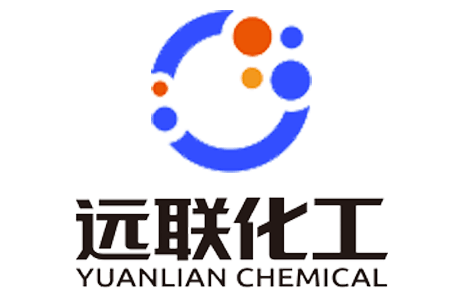
Demystifying Gypsum Retarders: How to Choose the Most Effective Solution for Your Construction Needs
In the gypsum building materials industry, the choice of retarder directly impacts product quality and production costs – a critical consideration for cost-conscious markets worldwide.
Gypsum plaster, as an essential binding material, often sets too quickly for practical application, making retarders necessary to adjust working time. With global infrastructure development accelerating, selecting cost-effective, high-performance gypsum retarders has become a priority for building material manufacturers.
This article explores the classification and working mechanisms of gypsum retarders and provides guidance on choosing optimal solutions for various application requirements.
01. Basic Principles of Gypsum Setting and the Importance of Retarders
The setting and hardening process of gypsum is essentially a hydration reaction where hemihydrate gypsum interacts with water to reform into dihydrate gypsum. From a crystallographic perspective, this process undergoes three stages: "dissolution-hydration-crystallization."
Since hemihydrate gypsum has much higher solubility in water than dihydrate gypsum, when hemihydrate dissolves, the solution rapidly becomes supersaturated with dihydrate, causing dihydrate crystals to precipitate.
As hydration continues, dihydrate crystals multiply and interlock, gradually causing the plaster to lose plasticity (initial set) and subsequently develop structural strength (final set).
This process naturally occurs very rapidly, resulting in extremely short working times unsuitable for most construction applications. Therefore, using retarders to adjust setting time has become an essential technique in gypsum-based product development.
02. Mechanisms and Characteristics of Three Main Types of Gypsum Retarders
The market primarily features three categories of gypsum retarders, each with distinct mechanisms and applications.
1. Organic Acid Retarders
Representative products: Citric acid, tartaric acid, malic acid, succinic acid, etc.
Mechanism: These retarders contain multiple functional groups (carboxyl and hydroxyl groups) that undergo chelation reactions with calcium ions in gypsum, forming stable complexes. These complexes adsorb onto dihydrate crystal surfaces, inhibiting crystal growth and delaying hydration.
Characteristics: Citric acid offers the highest retarding efficiency among organic acids but also significantly reduces the strength of gypsum products. Tartaric acid allows the matrix to maintain plasticity for longer periods.
2. Alkaline Phosphate Retarders
Representative products: Sodium pyrophosphate, sodium hexametaphosphate, sodium tripolyphosphate, sodium polyphosphate, etc.
Mechanism: These retarders react with Ca²⁺ ions in gypsum through their unique [NaPO₃]₂⁻ structural units, generating calcium polyphosphate precipitates. This precipitate layer coats gypsum crystal surfaces, reducing the dissolution rate of the hemihydrate phase and liquid phase supersaturation, thereby delaying hydration.
Characteristics: While effective, these retarders require higher dosage levels and can substantially weaken the matrix strength.
3. Protein-Based Retarders
Representative products: Animal/plant hydrolyzed protein, polymerized amino acids, etc.
Mechanism: Protein-based retarders contain functional groups (-COOH, -NH₂, -CO-NH-) that chelate with Ca²⁺ ions in gypsum and adsorb onto crystal surfaces, delaying hydration.
Characteristics: Protein retarders are not only abundant and eco-friendly but also offer excellent retarding properties with minimal strength reduction, making them the preferred choice in modern gypsum applications.
Note that proteins themselves lack retarding properties; they must be hydrolyzed into peptides to become effective. Based on production methods, peptide retarders divide into protein-hydrolyzed and polymerized amino acid categories.
Polymerized amino acid retarders are prepared through chemical polymerization of single amino acid raw materials, offering identical functional groups, consistent peptide units, good storage stability, easy water solubility, and odorless properties, resulting in more predictable retarding effects.

03. Six Key Selection Criteria for High-Quality Gypsum Retarders
For gypsum product manufacturers, selecting appropriate retarders is crucial. Here are essential quality indicators:
-
Excellent stability: Reliable production process ensuring consistent product quality across batches.
-
Clear, controllable linear relationship: Users can accurately adjust setting time according to application requirements.
-
Strong adaptability: Compatible with various types of gypsum raw materials.
-
Minimal strength impact: While delaying setting time, minimizes negative effects on the final strength of gypsum products.
-
Good compatibility: Works effectively with other gypsum additives (such as water reducers and water retention agents).
-
Superior dispersibility: Ensures uniform and stable dispersion within the gypsum slurry.
Overall, protein-based retarders, particularly polymerized amino acid products, perform excellently across most indicators and are ideal for quality-sensitive applications.
04. Global Market Trends for Gypsum Retarders
Market research indicates steady growth in the global gypsum retarder market. Estimated at $1.98 billion in 2023, the market is projected to reach $2.8 billion by 2032, with a CAGR of approximately 3.91%.
This growth is primarily driven by increasing demand for gypsum-based products in construction, automotive, and agricultural sectors. Urbanization acceleration and construction activity growth are key factors in emerging markets.
Latest trends include developing eco-friendly and sustainable retarders, along with increasing use of gypsum-based products in 3D printing and prefabricated construction. These trends present opportunities for manufacturers to explore new market segments.
05. Why Gypsum Retarder Innovation Matters Globally
Technological advancements in gypsum retarders hold particular significance for price-sensitive markets:
-
Cost reduction: High-quality locally produced retarders reduce dependency on expensive imports.
-
Adaptation to local materials: Domestically developed retarders better suit regional gypsum characteristics.
-
Construction industry advancement: Quality retarders improve gypsum product performance, supporting local construction sectors.
-
Environmental sustainability: New protein-based retarders are more eco-friendly, aligning with sustainable development goals.
As quality requirements for gypsum products continue rising in the construction industry, selecting appropriate retarders becomes increasingly important. Understanding different retarder types and mechanisms enables manufacturers to choose suitable products that ensure both workability and final product quality.
Continuous innovation in gypsum retarder technology provides markets with more high-quality, affordable options, helping manufacturers reduce production costs and enhance competitiveness. As technology further evolves, advanced gypsum retarders will undoubtedly gain broader market acceptance.
If you're seeking gypsum retarder solutions for specific applications, contact our technical team for personalized product recommendations and technical support tailored to your requirements.
Yuanlian Chemical specializes in the production of polyaspartic acid (PASP),tetrasodium iminodisuccinate(IDS), GLDA, MGDA etc. with stable quality and excellent quantity!





Contact us